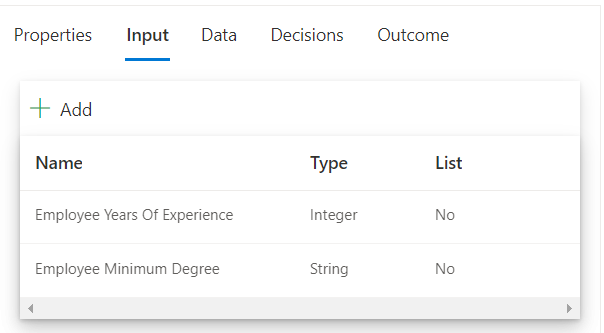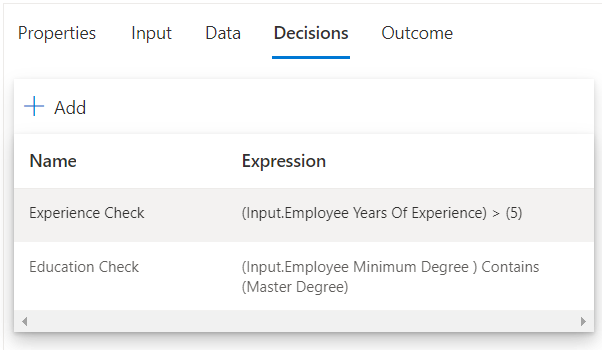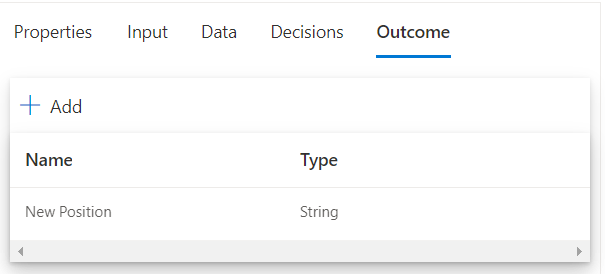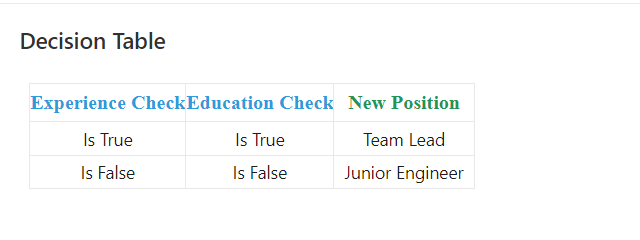Decision Table Block
About Decision Table
Decision table a type of logic blocks that are designed for navigating complex decision-making processes involving multiple conditions and criteria. They offer a structured approach to mapping out diverse scenarios along with their respective outcomes. By specifying input conditions and corresponding actions, decision tables automate the decision-making process, resulting in precise and consistent results across various scenarios.
Benefits of Decision Table
Streamlined Business Processes: Decision tables provide a clear visualization of complex workflows involving multiple stages and criteria. This clarity ensures that every scenario is accounted for, helping businesses to automate processes efficiently.
Enhanced Data Accuracy and Integrity: With the vast amount of data managed in modern systems, ensuring data accuracy is paramount. Decision tables set clear criteria for data entry and validation, reducing errors. This ensures that calculations and decisions based on data, such as customer discounts or eligibility criteria, are consistent and accurate.
Scalability and Flexibility: As businesses grow and evolve, their decision-making processes might need adjustments. Decision tables offer a scalable solution, allowing for easy updates or expansions to the decision criteria without overhauling the entire system.
Decision Table Components
1- Input/Data
Before decisions can be evaluated, they rely on a set of input or data. This is the raw information that the decision table processes whether it's coming from a user input (text, numbers, boolean, data/time ...), or from records pulled from a database using a query.
2- Decisions
Decisions represent the criteria or conditions that need to be assessed based on the input/data, and each decision have the following properties:
| Attribute | Description |
|---|---|
| Name | An identifier for the decision, helping users quickly understand what's being evaluated. |
| Return Type | Specifies the kind of data the decision will produce, like a integer, decimal, float, money, string, date/time, boolean, etc. |
| Expression | The logic or formula behind the decision. It evaluates the input/data to produce a result using built-in functions. |
3- Outcomes
Outcomes represent the actions or results that arise after evaluating the decisions in the table. They provide a directive or response based on the conditions specified in the decisions. And each outcome have the following properties:
Name: The name acts as a title for the outcome. It's a clear identifier, helping users quickly understand the nature of the resulting action or status. For example, if a decision checks whether a user's age is over 18, the outcome name could be "Eligible" or "Not Eligible."
Return Type: This describes the nature of the outcome's result, and in your context, it can be one of several types like integers, float, decimal, money, boolean, string or date/time.
How Decision Tables Work
A decision table offers a structured approach to decision-making, ensuring consistency across various scenarios. Let's delve into a practical example to understand this better:
Scenario: Evaluating Employee Eligibility for Promotion
Inputs:
Employee's Minimum Degree: This data will determine the educational qualification of the employee.
Employee's Years of Service: Represents the length of time the employee has been with the company.

Figure 1: Decision Table Inputs
Decisions:
Experience Check: This utilizes the built in greater than function to evaluate the employee's provided years of experience, determining if it exceeds 3 years.
Education Check: Assesses if the employee's minimum degree is a Master's using the contains built in function.

Figure 2: Decision Table Decisions
Outcomes:
New Position: The outcome that will be determined based on the decisions:
- If both the experience and educational qualification checks pass, the outcome is "Team Lead".
- If any of the conditions fail, the outcome is "Junior Engineer".

Figure 3: Decision Table Outcomes
Evaluation Process:
The table first checks the "Experience Check". If the employee has more than 3 years of service,this condition is true.
Then, it evaluates the "Educational Qualification Check". If the employee holds a Master's degree, this condition is true.
Based on these decisions, the "New Position" outcome is determined:
- If both conditions are met: The employee is assigned the "Team Lead" position.
- If not: The employee is designated as a "Junior Engineer".

Figure 4: Decision Table
What's Next?
Having grasped the concept of decision tables, it's time to transition to another pivotal decision-making tool: Decision Trees. In the upcoming section, we'll dive deep into understanding how decision trees help in visualizing and analyzing complex decision-making scenarios.